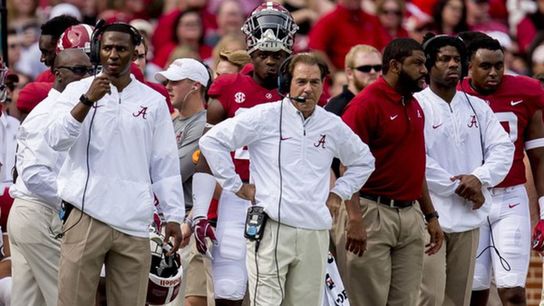The status quo within college sports is under constant attack from the outside, but massive change could also come from within.
The NCAA's Transformation Committee, formed by outgoing president Mark Emmert and an executive group of university presidents, is in the process of, essentially, reimagining the NCAA rule book from scratch, and so far what they've imagined is radically different from the current one.
The move stems from last summer's landmark 9-0 decision by the US Supreme Court banning the NCAA from limiting compensation to college athletes, so long as that compensation is tied to education. That decision has spooked the NCAA from stepping anywhere between college athletes and money, fearing further destruction by the court system.
As a result, the NCAA is envisioning a future in which the NCAA shifts much of the burden to each individual conference. Essentially, "the NCAA" as an entity could simply be an organization that exists to manage championship events and not get sued. In doing so, the NCAA would pass the authority to write and enforce bylaws to each individual conference.
From Sports Illustrated:
Several athletic administrators and college sports insiders discussed the Transfer Committee’s concepts under the condition of anonymity. They include (1) eliminating scholarship caps on sports that offer only partial scholarships; (2) abolishing the limitation on the number of coaches per team; (3) expanding direct payments from schools to athletes; (4) reconfiguring the recruiting calendar; and (5) implementing closed periods in the NCAA transfer portal. At least the first three items will be left in the decision-making hands of individual conferences, if the concepts are approved.
Abolishing the "countable coach" limit would allow each team's staff of analysts and quality control coaches to provide on-field instruction to players -- or to provide on-field instruction and no longer look over their shoulder for their employer's compliance staff. It also means schools could send analysts and quality control coaches on the road to recruit -- and/or to hire coaches specifically to go on the road to recruit.
For a beleaguered workforce of assistant coaches, weary from the near-constant expectation to recruit, this could be a welcome change.
The Transformation Committee is also considering changes to the recruiting calendar, per SI:
Concepts are also being discussed around simplifying the recruiting calendar, by potentially eliminating some regulations and replacing dead, quiet, evaluation and recruiting periods with two windows: a recruiting period and a dead period.
The committee is also mulling closing the Transfer Portal except for a 3-month window, per SI.
The committee is also considering lifting the cap on scholarships offered by "equivalency" sports where, for example, SEC baseball teams could soon see their scholarship allotment balloon from 11.7 to 35. (While the Transformation Committee can rewrite the NCAA constitution, it cannot change the law. Adding 23.3 scholarships in baseball would require adding 23.3 new scholarships in a women's sport as well.)
The logical conclusion of everything floated above is this: If SEC (or Big Ten, or ACC) schools can soon employ 25 on-field football coaches and scholarship 35 baseball players, what's to stop them from lifting the 85-man limit in football? Already, the NCAA is in the process of lifting the 25-man signing class limit to as high as 32, thanks to the Transfer Portal.
Nothing the 21-member Transformation Committee is considering is final. The reason we're hearing about these possible changes -- the committee recently briefed a panel of ADs in Dallas -- is to prepare the college sports industry for radical change. Emmert and the NCAA's executive committee charged the Transformation Committee to re-write Division I policies by August. The committee will likely not finish its work by August, but a future is coming, sooner than later, where the SEC can pass new rules that Sun Belt would have no power to stop.
“Every G5 AD is like, ‘Holy s---!’” one AD told SI.
